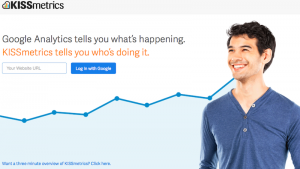— December 2, 2017

The other day, I heard a podcast in which Gary Vaynerchuk said, “If you care more about the end consumer than you care about your own self, you will win”. This is the heart of Customer Success. Gary’s background is in the wine industry, which got me thinking about the way we talk about Customer Success primarily in the context of the SaaS industry – understandably so, as this is where its roots lay. As I’ve learned first-hand after making an industry shift myself, the concept of Customer Success is just as applicable to the world outside of SaaS.
Customer Success is crucial to anyone that is selling anything. Pause for a moment and try to think of an industry where helping clients succeed doesn’t apply. I’m betting you can’t, because even in industries where a recurring revenue model isn’t present, an effective Customer Success strategy can be a game changer. Take an auto body shop – most don’t have a subscription based service or any other contractual model that has predictable revenue, but they do benefit greatly from repeat business and referrals, which are two of the byproducts of a successful Customer Success implementation.
Understanding a client’s goals and desired outcomes is always good for business. Maybe you’re a yoga teacher and success to you means a student leaves class feeling lighter and freer than before they arrived. However, one of your students may define success as being able to do a handstand. As a yoga teacher, you may feel that doing “yoga tricks” shouldn’t be the primary goal, but understanding your student’s desired outcome, and designing sequencing that builds core, shoulder, and arm strength – a solution you’re providing – will certainly drive a higher level of engagement with this student. This is why organizations need to understand what success looks like at the individual account level as many will define success with your product or service differently than you would.
All companies need to proactively monitor churn warning signs. In a time when consumers have access to the world in their pocket, retaining them is harder than ever. Being proactive in the relationship is surely better than attempting to win them back after they have left. Sure, monitoring engagement data, for example, can be challenging outside of SaaS where you often don’t have easily trackable items such as frequency of logins, time in software, or about-to-expire credit cards on file. Non-SaaS companies need to look for industry-specific triggers that give a glimpse into the crystal ball of retention. Online retail stores may want to monitor number of delayed deliveries or return rates on merchandise, and pizza restaurants should keep an eye on Yelp reviews. Companies may need to rely on more periodic pulse surveys and get creative with metrics such as client response rates – the amount of time it takes a customer to return a call or email to your organization – to help monitor engagement.
Customer Success is more than just retention, it’s an attempt to deliver value in every interaction. I don’t think this is stressed enough in the SaaS world, let alone outside. Every time we make contact with a customer, we should attempt to deliver something that we could bill for. When a customer emails or calls to ask a question, company representatives should think, “How can I provide consultancy or advice that can help them be even more successful? Something so valuable that we could charge for this interaction but won’t.” This is where best practice sharing can be so powerful.
All companies, not just SaaS, should leverage technology. In the world of SaaS, it is industry standard to have some sort of “ticketing system”. This allows you to measure important KPIs such as time to first response, or time to resolution, allowing you to ensure SLAs are being met and ideally exceeded. Outside of SaaS, many of the companies I’ve recently interacted with, regardless of size, seem to track requests and deliverables mainly via email and spreadsheets. There is a great benefit to getting the right technologies in place to improve and scale support interactions, and this data can be used to proactively monitor the engagements that I spoke of above as well.
Customer education (content) is paramount regardless of industry. For years, SaaS companies have embraced self-service models – often building elaborate Knowledge Bases to allow customers to find answers to their questions and share knowledge among themselves. Even if you manage a funeral home, wouldn’t it be great if your customers could easily find answers to all of their questions on your website without needing to call or email you in their time of need? Now, there is certainly a balance here as I’m a big believer in “the higher tech, the higher touch” but this is where CSM’s so beautifully come into play – relationships, relationships, relationships.
Ultimately, all Customer Success concepts can be adapted to any business and industry. Concepts like client lifecycle, health score, QBR, customer base segmentation, and upsells are applicable to all customer-facing industries. These ensure that outstanding service and unique experiences are provided while achieving customer goals with the product or service in question. We know that most customers who find success with your product will, in the long term, spend more money and serve as brand advocates for your company. Who wouldn’t want that?
I’m hopeful that sooner rather than later we are able to more fully share what we are learning in the world of SaaS and help others apply it to the greater business world. Who couldn’t benefit from tried and true methods of not just retaining, but growing accounts? Ultimately, as Lincoln Murphy states, I’m hopeful that “sometime down the road we’re no longer talking about ‘Customer Success’ as a separate function within a business, but simply as part of the way you do business.”
Digital & Social Articles on Business 2 Community
(32)








